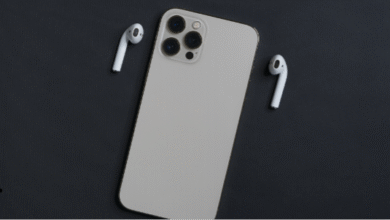Lights, camera, action! Step into the mesmerising world of 3D animated films where imagination knows no bounds and dreams come to life. From heartwarming tales that tug at your emotions to epic adventures that leave you on the edge of your seat, these stunning creations have captivated audiences worldwide. But have you ever wondered about the magic behind the scenes? Join us as we embark on an extraordinary journey, breaking down the techniques that transform mere pixels into unforgettable characters and breathtaking landscapes. Get ready to be awestruck as we unravel the secrets behind some of cinema’s most jaw-dropping visual spectacles – this is a blog post you won’t want to miss!
Introduction to 3D Animation
The term “3D animation” can refer to a variety of different things within the realm of computer-generated imagery (CGI). For the purpose of this article, we’ll be focusing on the specific process and techniques used to create three-dimensional moving images, often seen in feature-length animated films.
The first step in 3D animation is to create a “wireframe” model of the object or character you want to animate. This wireframe will serve as the skeleton for your image and will be fleshed out with color and detail in later steps. Once you have your wireframe model, you’ll need to add what are called “bones”.
These bones will be used to control the movement of your object or character. You can think of them like joints in a human body – they determine how far and in what direction something can move. Once you have your bones set up, it’s time to start adding some flesh to your skeleton. This is where you’ll begin creating the surface details of your model using colors and textures.
With your model now complete, it’s time to start animating! The first thing you’ll need to do is create what’s called an “animation rig”. This rig will be used to control the movement of your character or object.
History of 3D Animation
The history of 3D animation is a fascinating one that can be traced back to the very earliest days of cinema. The first attempts at creating three-dimensional images on film were crude and often unsuccessful. The technology behind 3D animation rapidly evolved and soon became an essential tool for filmmakers.
Some of the earliest examples of 3D animation can be found in early black-and-white films such as The Power of Love (1922) and The Lost World (1925). These early efforts used an effect known as “stereoscopic” animation. Which created the illusion of depth by using two separate images superimposed onto one another.
It wasn’t until 1953 that the first color 3D film was released with Disney’s seminal work, “House of Wax”. This was followed by a number of other notable 3D films including Alfred Hitchcock’s “Dial M for Murder” (1954), “The Three Musketeers” (1961), “Curse of the Fly” (1965), and “Spacehunter: Adventures in the Forbidden Zone” (1983).
With the advent of computer-generated imagery (CGI) in the late 20th century, 3D animation reached new heights of realism and complexity. Some of the most iconic and popular films to feature CGI animation include “Jurassic Park” (1993), “Toy Story” (1995), “Titanic” (1997), and “Avatar” (2009).
Types of 3D Animation
The most common type of 3D animation is computer generated imagery (CGI). CGI is used to create characters, objects, and environments that look realistic. But would be difficult or impossible to make in real life. Other types of 3D animation include stop motion, which uses physical objects that are moved frame by frame, and hand-drawn animation, which is created by drawing each frame on a piece of paper.
CGI is the most popular type of 3D animation because it can be used to create any kind of environment or character. Stop motion is often used for its nostalgic quality or for its DIY aesthetic. Hand-drawn animation is usually used for more experimental films or for cartoons that need a traditional look.
Tools and Techniques Used in 3D Animation
The secret to creating stunning 3D animated films is in the details. The artists and animators who work on these films spend countless hours perfecting the smallest of details, from the way a character blinks to the way they walk. But how do they do it? In this article, we’ll take a look at some of the tools and techniques used in 3D animation to bring these characters and worlds to life.
One of the most important tools in any animator’s toolkit is their software. The software used for 3D animation has come a long way in recent years, and there are now a number of different programs that can be used to create amazing animations. Some of the most popular programs used by animators include Autodesk Maya, Autodesk 3ds Max, and Blender.
Another important tool used in 3D animation is motion capture. Motion capture is a process where an actor wears a special suit that tracks their movement. This data is then used to animate the character in the film. This technique is often used for action-packed scenes or for creating realistic human movements.
One of the most important techniques used in 3D animation is rendering. Rendering is the process of creating the final images that will be seen on screen. This involves using powerful computers to generate high-quality images from the animation data.
Examples of Popular 3D Animated Films
There are a number of popular 3D animated films that use different techniques to create their stunning visuals. Here are a few examples:
“Frozen”: This film uses a technique called “stereoscopic 3D,”. Which creates the illusion of depth by having two different images projected onto the screen, one for each eye. This gives the audience the feeling of being transported into the world of the film.
“The Lego Movie”: This movie uses something called “stop-motion animation,”. Which is when physical objects are moved in small increments and photographed to create the illusion of movement. The stop-motion animation in this film is used to create a unique and visually stunning world.
“How to Train Your Dragon”: This film uses a technique called “rotoscoping,”. Which is when actual footage is traced frame-by-frame to create an animated version. This helps to give the film its realistic look and feel.
Pros and Cons of 3D Animation
3D animation is one of the most popular techniques used in filmmaking today. Its popularity is due in large part to its ability to create realistic images and environments that can be difficult or impossible to achieve using traditional methods. However, like all techniques, 3D animation has its own set of pros and cons that should be considered before deciding whether or not to use it in your project.
PROS:
- Can create highly realistic images and environments.
- Flexible – can be used for a wide variety of projects, from feature films to video games.
- Can be used to create characters and objects that would be difficult or impossible to create using traditional methods.
CONS:
- Requires a significant amount of time and effort to produce high-quality results.
- Can be expensive – requires specialised hardware and software, as well as skilled animators.
- Results can sometimes look ” unnatural” or “cartoonish” if not done properly.
Read Also: Creative Methods To Embed Facebook Posts On Website
Conclusion
3D animation is an art form that requires a great deal of skill and creativity, but the results can be truly stunning. We hope this article has given you a better understanding of the techniques behind 3D animated films. By breaking them down into their component parts. It’s easier to see how even the most complex animations come together to produce something beautiful. Whether you’re an aspiring animator or just someone who appreciates amazing visuals. We think you’ll appreciate the complexity of these incredible works when seen up close!






One Comment